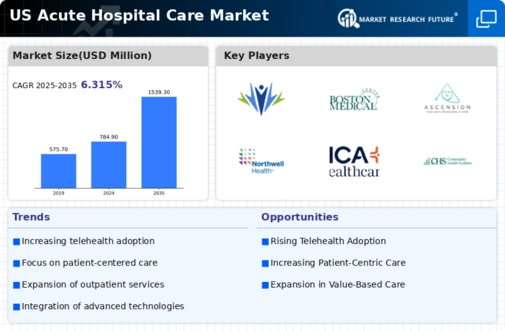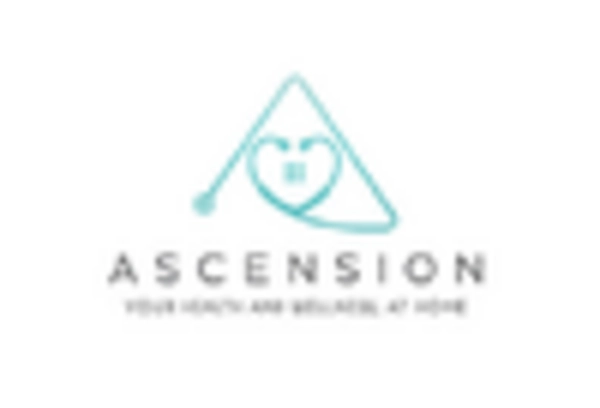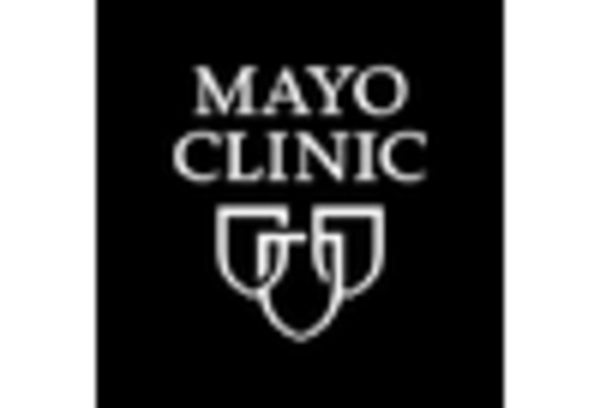Shift Towards Preventive Care
The acute hospital-care market is witnessing a paradigm shift towards preventive care, driven by a growing awareness of health management among the population. As healthcare costs continue to rise, there is an increasing recognition of the importance of preventing illnesses before they necessitate acute interventions. This trend is reflected in the rising investment in community health programs and wellness initiatives. Data suggests that hospitals that implement preventive care strategies can reduce emergency admissions by up to 15%. By focusing on early detection and management of health issues, the acute hospital-care market can alleviate pressure on hospital resources and improve overall public health outcomes. This proactive approach not only benefits patients but also enhances the sustainability of healthcare systems.
Regulatory Changes and Compliance
The acute hospital-care market is significantly influenced by evolving regulatory frameworks and compliance requirements. Recent legislative changes, such as the implementation of value-based care models, compel hospitals to focus on quality outcomes rather than volume of services. This shift necessitates substantial adjustments in operational practices and financial strategies. Hospitals are increasingly required to demonstrate compliance with various quality metrics, which can impact reimbursement rates. For example, facilities that fail to meet specific performance benchmarks may face penalties, thereby affecting their financial viability. Consequently, the acute hospital-care market must navigate these regulatory landscapes carefully, ensuring that they align their practices with the latest standards to maintain funding and support.
Advancements in Medical Technology
Technological innovations play a pivotal role in shaping the acute hospital-care market. The integration of advanced medical technologies, such as telemedicine, robotic surgery, and electronic health records, enhances patient care and operational efficiency. For instance, telemedicine has gained traction, with a reported increase of over 30% in virtual consultations in recent years. This shift not only improves access to care but also reduces the burden on hospital resources. Additionally, the implementation of electronic health records streamlines patient information management, facilitating better coordination among healthcare providers. As hospitals invest in these technologies, they are likely to improve patient outcomes and reduce costs, thereby positioning themselves competitively within the acute hospital-care market.
Rising Demand for Emergency Services
The acute hospital-care market experiences a notable increase in demand for emergency services, driven by a growing population and an aging demographic. As the U.S. population ages, the prevalence of chronic conditions rises, leading to more frequent hospital visits. According to recent data, emergency department visits have surged by approximately 20% over the past decade, indicating a pressing need for acute care facilities. This trend suggests that hospitals must adapt to accommodate the influx of patients requiring immediate attention. Furthermore, the increasing incidence of lifestyle-related diseases, such as diabetes and heart disease, further fuels this demand. Consequently, the acute hospital-care market must evolve to ensure adequate resources and staffing to meet the needs of this expanding patient base.
Increased Focus on Patient Experience
In the acute hospital-care market, there is a growing emphasis on enhancing patient experience as a critical component of care delivery. Hospitals are increasingly recognizing that patient satisfaction directly correlates with clinical outcomes and financial performance. Recent surveys indicate that facilities with higher patient satisfaction scores tend to experience lower readmission rates and improved reimbursement rates. As a result, hospitals are investing in initiatives aimed at improving communication, reducing wait times, and providing personalized care. This focus on patient experience not only fosters loyalty but also positions hospitals favorably in a competitive market. By prioritizing patient-centered care, the acute hospital-care market can potentially enhance its reputation and attract more patients.

















Leave a Comment